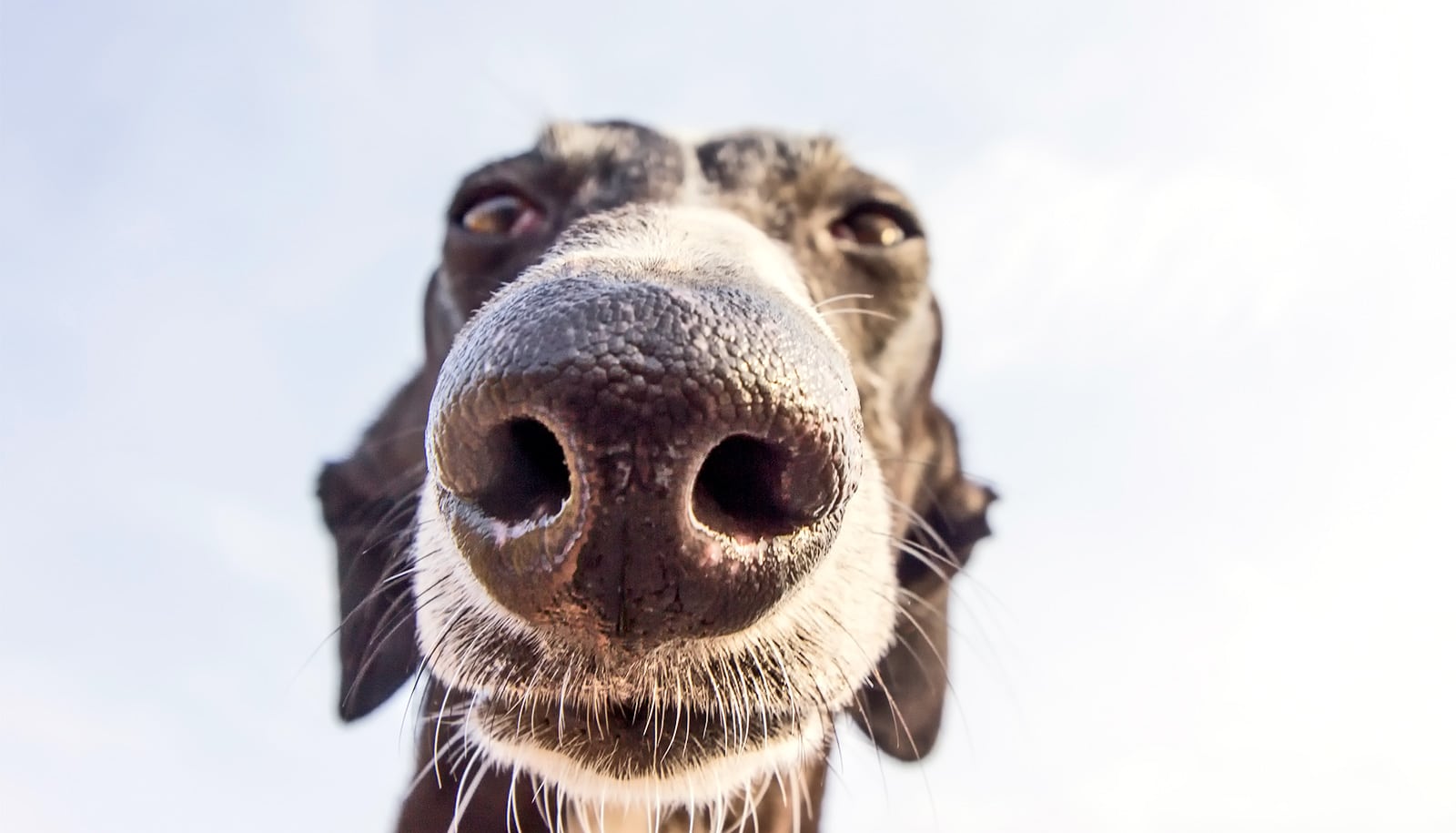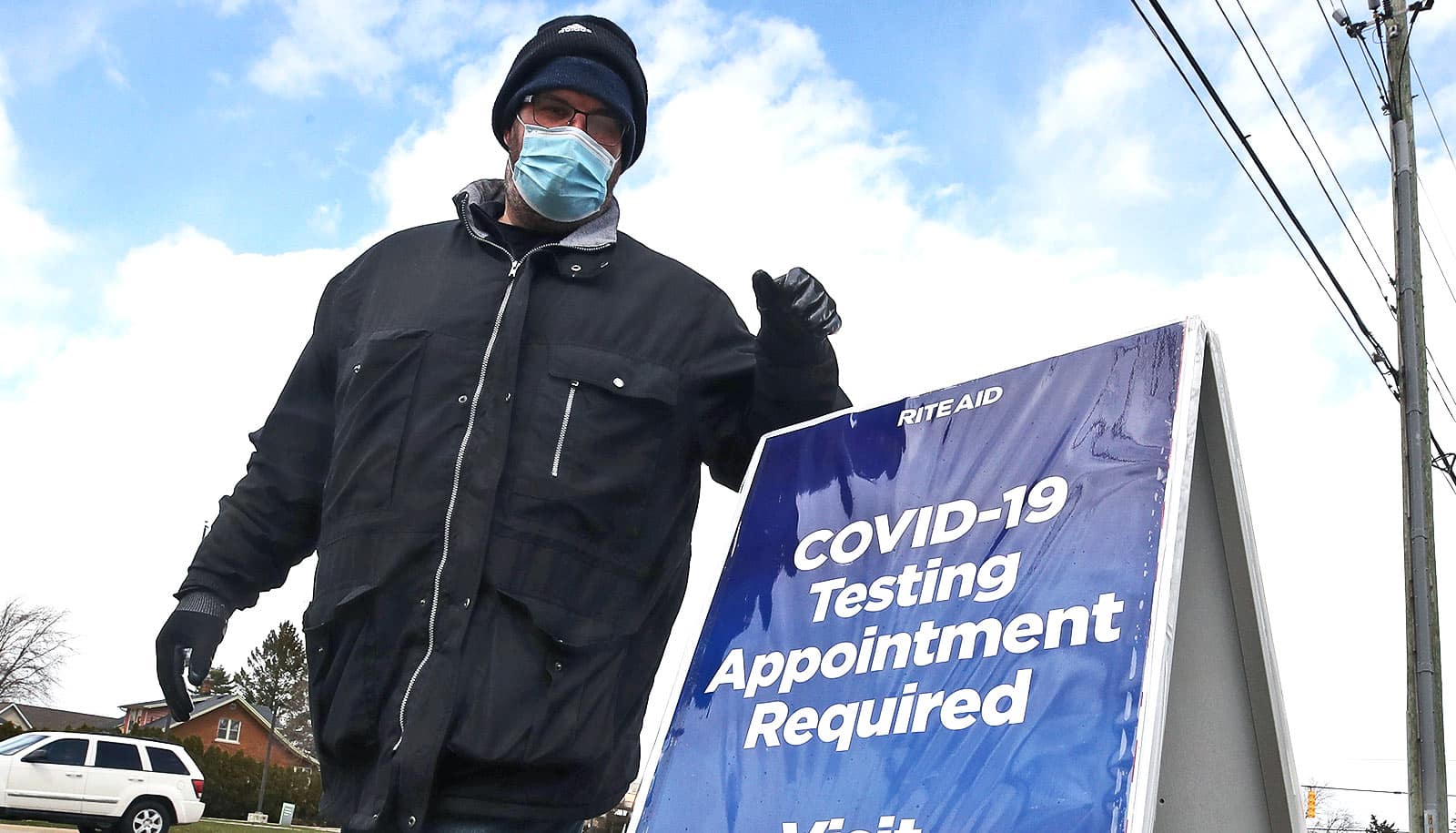
(Credit: Getty Images )
Dogs sniff out COVID more effectively than tests
Dogs can detect COVID-19 infections faster and more accurately than conventional technology, a review shows.
Dogs can be a faster, more precise, less expensive—not to mention friendlier—method of detecting COVID-19 than even our best current technology, a new review shows.
A growing number of studies over the last two or so years has highlighted the power of dogs in detecting the stealthy virus and its variants, even when they are obscured by other viruses, like those from common colds and flu.
“It went from four papers to 29 peer-reviewed studies—that includes more than 400 scientists from over 30 countries and 31,000 samples,” says Tommy Dickey, professor emeritus at the University of California, Santa Barbara, who with collaborator Heather Junqueira of BioScent, Inc., gathered the recent massive number of findings into a review in the Journal of Osteopathic Medicine .
From their rigorous survey of exclusively peer-reviewed studies published by traditional academic publishers covering both field and clinical experiments, Dickey and Junqueira assert that the collective research demonstrates that trained scent dogs are “as effective and often more effective” than the antigen tests we’re keeping handy at home, as well as the gold-standard reverse transcription polymerase chain reaction (RT-PCR) tests deployed in clinics and hospitals.
Not only can dogs detect the SARS-CoV-2 virus faster, they can do so in a non-intrusive manner, without the environmental impact that comes with single-use plastics.
The magic lies in their highly evolved noses, with physical and neural optimizations for smell. Dogs have hundreds of millions of olfactory receptors, compared to roughly five to six million for humans, and a full third of their brains are devoted to interpreting smells, compared to a scant 5% in human brains. All these enhancements mean that dogs can detect very low concentrations of odors associated with COVID infections.
“They can detect the equivalent of one drop of an odorous substance in 10.5 Olympic-sized swimming pools,” Dickey says. “For perspective, this is about three orders of magnitude better than with scientific instrumentation.”
In some cases, dogs were able to detect COVID in pre-symptomatic and asymptomatic patients whose viral load was too low for conventional tests to work. And not only that, Dickey adds, dogs can distinguish COVID and its variants in the presence of other potentially confounding respiratory viruses, such as those of the common cold or flu.
“They’re much more effective,” Dickey says. “In fact one of the authors that we quote in the paper commented that the RT-PCR test is not the gold standard anymore. It’s the dog.
“And they’re so quick,” he adds. “They can give you the yes or no within seconds, if they’re directly smelling you.”
In some scenarios the dog gave the person a quick sniff, sitting down to indicate the presence of COVID. In others, the dog was given a sweat sample to smell, a process that could take a few minutes. The speed is especially important in situations like the earlier phase of the pandemic, when a gap of days between test and result could mean an exponential rise in infections if the person was positive, or scenarios that involve a high volume of people.
Scent dogs such as beagles, basset hounds, and coonhounds would be the ideal dog for the task, given their natural tendencies to rely on odors to relate to the world, but the studies showed a variety of other dogs are up to the challenge. Given a few weeks of training, puppies and older dogs, males and females, purebreds and mixed breeds all performed admirably. In one study, a “problem” pit bull terrier that had been abused found a second chance by becoming a perfectly capable COVID detector.
Despite these glowing reviews, there remain challenges to placing man’s best friend in the mainstream of medical diagnoses, although the animals have proven successful in the detection of other conditions, such as diabetes and cancer .
“There’s quite a bit of research, but it’s still considered by many as a kind of a curiosity,” says Dickey, a professor emeritus of geography whose love for Great Pyrenees dogs led him to become a certified therapy dog handler and author of therapy dog books after he retired from formal teaching.
Places that were open to using dogs in field experiments tended to be smaller countries such as Finland and Colombia, where there was a desire to explore fast and cost-effective methods of detecting COVID without having to wait for expensive tests to be developed or for reagents to become available.
Of their study, Dickey and Junqueira add, “After conducting this comprehensive review, we believe that scent dogs deserve their place as a serious diagnostic methodology that could be particularly useful during future pandemics, potentially as part of rapid routine health screenings in public spaces. Perhaps, most importantly, we argue that the impressive international quality and quantity of COVID scent dog research described in our paper for the first time, demonstrates that medical scent dogs are finally ready for a host of mainstream medical applications.”
Source: UC Santa Barbara
The post Dogs sniff out COVID more effectively than tests appeared first on Futurity .
Share this article:
This article uses material from the Futurity article, and is licenced under a CC BY-SA 4.0 International License. Images, videos and audio are available under their respective licenses.
Related Articles:
COVID testing is still too slow in the US
Oct. 21, 2020 • futurityTeam aims for a simple, at-home COVID-19 test
April 22, 2020 • futurityLinks/images:
- https://www.futurity.org/dogs-smell-covid-19-sars-cov-2-2517332-2/
- https://doi.org/10.1515/jom-2023-0104
- https://www.futurity.org/dogs-cognition-test-1899882-2/
- https://www.futurity.org/dogs-smell-prostate-cancer-2534232/
- https://www.news.ucsb.edu/2023/021174/dogs-can-detect-covid-19-infections-faster-and-more-accurately-conventional-technology
- https://www.futurity.org/dogs-smell-covid-19-2963202/
- https://www.futurity.org


